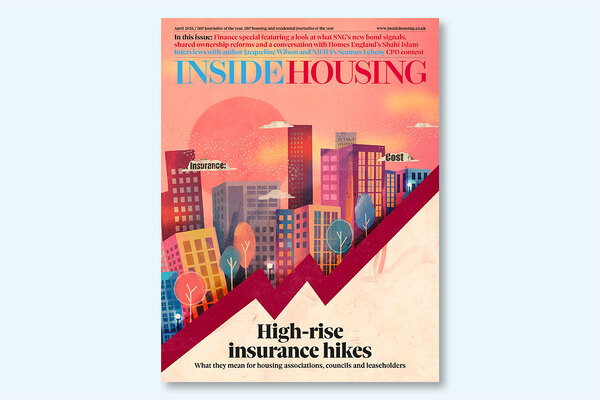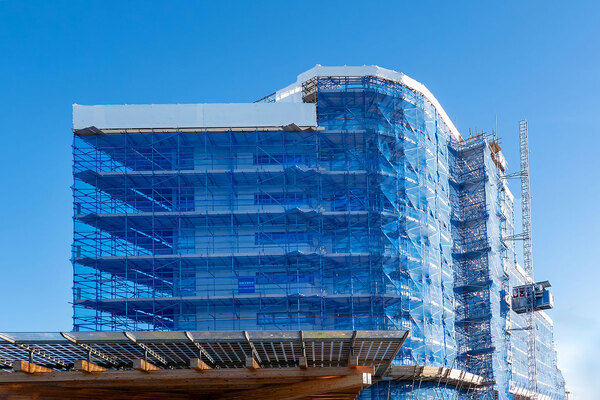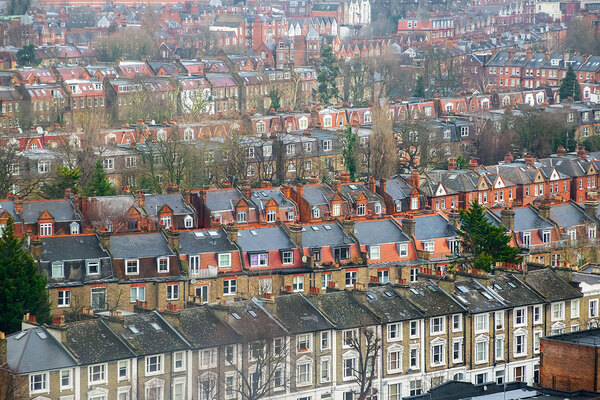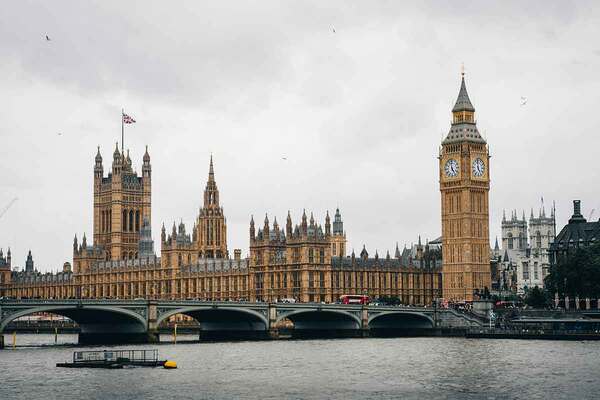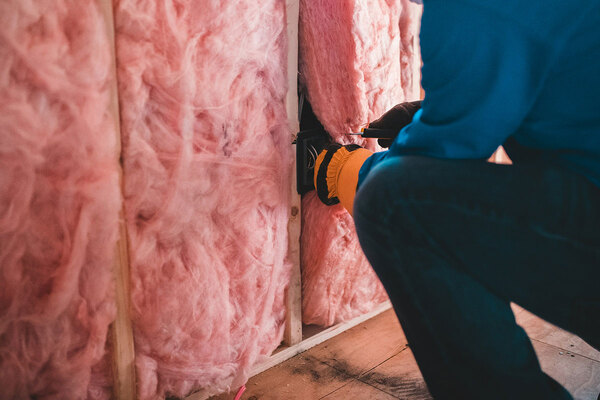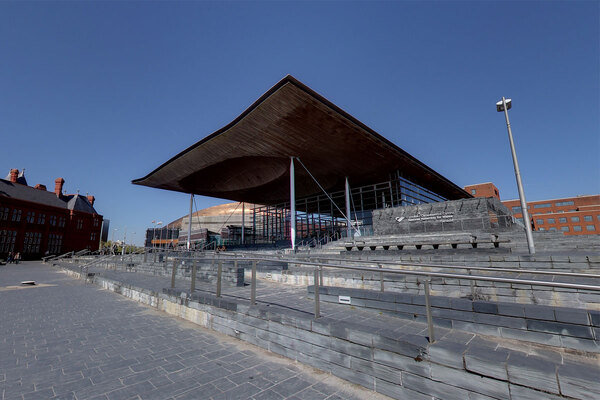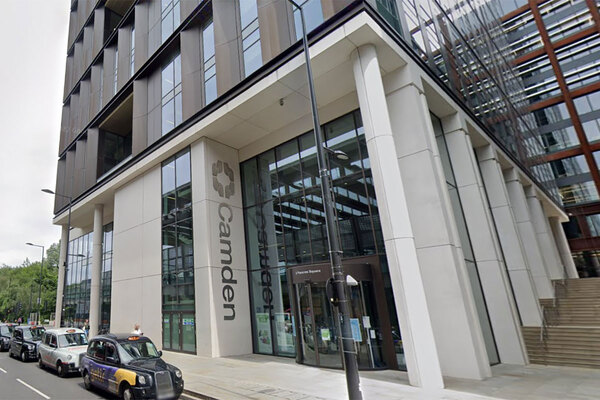How insurance hikes for high rises are devastating social landlords and leaseholders
Inside Housing data analysis shows the full extent of insurance premium hikes on tower blocks, and their impact on housing associations, councils and leaseholders. Keith Cooper reports. Illustration by Nicolas Ogonosky
In 2020, Jon Cruddas, Labour MP for Dagenham and Rainham, was contacted by leaseholders in his constituency from a privately owned block of 86 flats. Despite the building receiving a B1 rating for low fire risk, the residents’ insurance bill had been hiked up tenfold to £140,000 from £14,000 the previous year. The next year, the insurer pushed the premium up again, to £316,000. “The impact on residents was devastating,” Mr Cruddas tells Inside Housing.
While this case of insurance premium inflation seems extreme, this pattern of rising costs, in the teeth of low fire risk ratings, has been seen across the country. It creates misery for leaseholders and an extra financial drain on housing associations and council landlords, in terms of the insurance costs of homes they rent out.
Giles Grover, a leading member of the End Our Cladding Scandal campaign group, says the number of leaseholders seeing insurance costs double, triple or more, has risen since 2019.
“We’ve been campaigning on this because it is causing a lot of pain and damage right now, which has only got worse with the cost of living crisis,” he says. “It has a big impact on mental health, because we are having to pay money hand over fist for something we have no control over and you don’t know when it is going to end.”
The insurance on Mr Grover’s own building shot up from £83,000 in 2018-19 to around £440,000 this year. He is paying £100 a month for his share. Social rent tenants’ insurance is covered by the association.
So what is the scale and impact of these escalating building insurance costs?
To find out, Inside Housing sought data on insurance cost rises from local authorities with homes known to be in need of remediation. We have also drawn on an earlier anonymous survey of housing associations in our sister publication Social Housing.
Many of the biggest increases are in private buildings. A survey of 143 blocks by the Association of Residential Managing Agents (ARMA) found that renewal premiums rose from £7.8m in 2019-20 to £29.1m in 2020-21, an average increase of 374% per block.
There are substantial increases in social housing too, with housing associations appearing to experience more extreme hikes than local authority landlords. As Douglas Rhodes, a partner at law firm Trowers & Hamlins, points out, associations will sometimes have no say in how much insurance their leaseholders are charged.
“Landlords are often stuck in the middle: they need to ensure their buildings are insured and they do what they can to bring down the premiums,” he says. “But some housing associations find themselves doubly stuck in the middle when they have units in a private block which they don’t manage. They won’t have any control to reduce the premium when it is a really substantial one.”
The Social Housing survey found hikes in housing associations’ leasehold insurance of between 100% and 300%, and more modest rises in property insurance of between 10% and 70%.
While the increases for councils are smaller, they are struggling to get quotes for renewals at all. Greenwich reported the largest rise in buildings insurance, from £1.1m to £1.8m (59%) between 2021-22 and 2022-23. The next largest was in Barking and Dagenham. Its cover jumped 48%, from £1.4m to £2m, in the same period.
Smaller increases were found in other authorities in previous years, our Freedom of Information analysis shows. In 2019-20, leaseholders in Islington, Norwich and Nottingham saw their insurance bills shoot up 22%, 15% and 10%, respectively, compared with single-digit proportional increases in later years.
However, a sift of council papers from recent years reveals increased difficulties in securing offers from insurance companies at all.
Three London boroughs “failed to secure bids at tender” for insurance in 2023, according to a Havering Council paper on the state of the market that year. “The market for underwriting leasehold insurance tower blocks has changed considerably since the tragic events at Grenfell Tower in 2017 and the subsequent identification of sub-standard cladding in a number of tower blocks,” it added.
Havering’s premium for a five-year policy increased “significantly” to £7m last year, the report showed, but it had no figures for the previous year for comparison.
Hackney Council received just two bids from a single provider when renewing its buildings insurance last year. “This represents an acceptable response in the context of a hardening market, where some local authorities may have not received any traditional market response at all,” a council paper from January said.
In February, a joint bid for leasehold insurance by Hammersmith and Fulham, Kensington and Chelsea, and Westminster councils was reported to result in just one bid at a price “significantly” higher than the previous premium. Feedback from the firms that declined to bid said the three boroughs had provided “insufficient detailed information regarding construction materials, insulation and cladding information, including [for] remedies and timescales for remedial action”, according to a Hammersmith and Fulham Council paper that month.
Causes of rising insurance premiums
The huge escalation in building and leasehold insurance premiums has well-established links to the Grenfell Tower fire. “UK multi-occupancy stock is tarnished by poor building methods, such as unsafe cladding or insulation, and the fire in Valencia hasn’t helped,” says Rob Mayo, chief executive of insurance broker Insurety.
“There is no longer such a thing as a standard construction in insurers’ eyes. You can have a block of flats that from the outside looks like it’s made out of brick blocks and concrete, but then find out that it is covered in a polystyrene and render, which is as flammable as can be.”
But Mr Mayo says the rises in recent years have multiple other drivers. Brexit has made it harder to access materials from Europe. There is also a new attitude in the industry towards flood risk and the property side of their business. The average cost for water damage claims had increased tenfold from £3,000 in 2018 to more than £30,000. Homes flooded from rainfall in Kensington and Chelsea in 2021 mean homes “on the side of a mountain” could be considered as much of a flood risk as those close to rivers.
The three boroughs issued a second tender this year with the extra information the insurers requested. To tempt more bidders, they also offered to cover the first £100,000 of each claim themselves and let insurers cover each block on a case-by-case basis. Despite this, they failed to attract any further bidders and again received just a single offer, which they accepted.
Dan Hawthorn, executive director for housing and social investment at Kensington and Chelsea Council, says the authority was “surprised” by insurers’ request for more information on its housing stock.
“The initial tender was created with the same level of information as all previous tenders,” he adds.
“We wanted to make sure our leaseholders had the opportunity to get the best achievable value, so we decided to run a second market-wide tender with all the information the insurers had asked for.”
Mr Hawthorn believes there is a “problem in the insurance market”.
“We are aware of a number of local authorities who have recently put out to tender for leasehold buildings insurance and received only one bid. A group of senior leasehold officers from local authorities has written to the government about this issue on a number of occasions, and one of our lead members will be writing to the housing minister to raise their concerns,” he says.
Jeremy Flint, insurance risk consultant at Gibbs Laidler Consulting, which advises housing associations, confirms that insurers are demanding more data and that “some social landlords don’t have it”.
“The Regulator of Social Housing will rightly ask for data on cladding, fire safety and external wall systems with an emphasis on risk to life, but insurers have different requirements and are equally interested in the risk of damage to the building,” he says.
On-site visits
Some insurers now insist on an on-site evaluation of buildings by a surveyor registered with the Royal Institution of Chartered Surveyors, instead of a desktop one. “That is a potentially time-consuming and expensive,” says Mr Flint.
Mr Flint also warns that some insurers are now offering more restrictive policies which no longer automatically cover full rebuilding costs.
“If a building is severely damaged, you risk not getting back the full cost. These more restrictive policy conditions could in theory threaten a social landlord’s ability to meet their loan covenants,” he explains. Such a situation would put associations at risk of insolvency.
374%
Average hike per private block, according to ARMA
£316k
Premium for block in Dagenham and Rainham, up from £140k the year before, and £14k the year before that
The shrinking pool of insurers willing to provide cover for leaseholder properties is not without its financial risks. For contracts that last longer than a year, landlords are expected to obtain multiple quotes from service providers, such as insurance firms, before consulting their leaseholders on preferred quotes.
“This is something that social landlords would want to do out of self-interest anyway, as the portfolios they are insuring will usually contain rented properties as well as leaseholder ones,” says Trowers & Hamlins’ Mr Rhodes.
But Leeds Council tells Inside Housing it had to seek dispensation from the first-tier tribunal, which considers leasehold cases, after securing just a single bid for its five-year insurance contract last year. Without such a dispensation, it risked having to foot leaseholders’ £500,000 share of the insurance bill, a council paper warned, and only obtained the dispensation from the tribunal in February.
“A five-year contract for insurance for the benefit of leaseholders in council-owned residential properties was put in place on 1 April 2023,” a spokesperson for Leeds Council says. “The council believes that this represents value for money for leaseholders in the current market.”
This narrowing choice of insurers spells an even tougher market for social landlords seeking to renew their premiums in 2025.
Mr Grover says the End Our Cladding Scandal campaign group has been pressing the government for years to do something about the huge rises in insurance costs. It proposed a government-backed insurance scheme to Robert Jenrick, the housing secretary at the time, in 2021, but this was rejected.
The only hope for leaseholders and landlords now is an industry-backed scheme drawn up by the Association of British Insurers (ABI), which was announced in March after months of delays. The so-called Fire Safety Reinsurance Facility aims to improve access to insurance for landlords of buildings with combustible cladding and other fire safety issues. It hopes to do this by boosting the capacity of existing insurance firms and attracting more insurers into the market.
But the End Our Cladding Scandal campaign is disappointed with how the facility turned out. “The concerns we have highlighted to the ABI and the Department [for] Levelling Up, Housing and Communities repeatedly over many years have not been allayed,” it says in a public statement.
“Our primary concern is that this facility is set to fail. It is especially disappointing that the facility will only be available at point of renewal.”
The ABI confirmed the facility is only expected to run for up to five years, so it will offer only a temporary reprieve to a limited number of leaseholders and landlords. But with predictions that remediating unsafe cladding is a marathon set to stretch into decades, it is unlikely to ease the chronic problems in the property and leaseholder insurance market long term.
Recent longform articles by Keith Cooper
The Inside Housing Skills Audit 2023
Major new analysis reveals the skills and professional backgrounds of almost 1,500 individuals shaping the future of England’s biggest housing associations. Keith Cooper reports
How insurance hikes for high rises are devastating social landlords and leaseholders
Inside Housing data analysis shows the full extent of insurance premium hikes on tower blocks, and their impact on housing associations, councils and leaseholders. Keith Cooper reports
Invisible children: how poor conditions in temporary accommodation are damaging young lives
The number of children in insecure temporary housing is growing. But the impact this is having on their health, development and life chances still remains largely unknown and unrecorded. Keith Cooper reports
No crib for a bed: the homeless babies at risk from a lack of safe cots
A safe sleeping space is crucial to protect babies’ lives. Yet for families at the sharp end of the housing crisis,
this can be impossible. Keith Cooper investigates the tragic consequences, but also a campaign that could require councils to provide cots to families in temporary accommodation for the first time
Sign up for the IH long read bulletin
Already have an account? Click here to manage your newsletters

